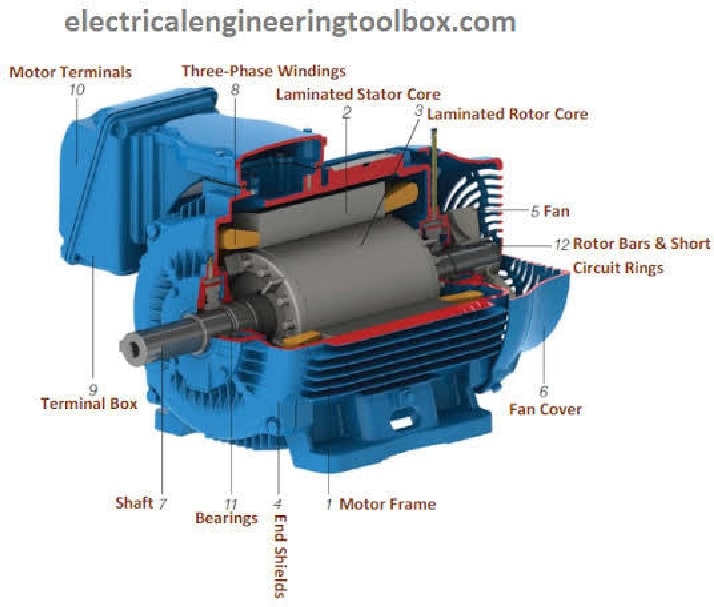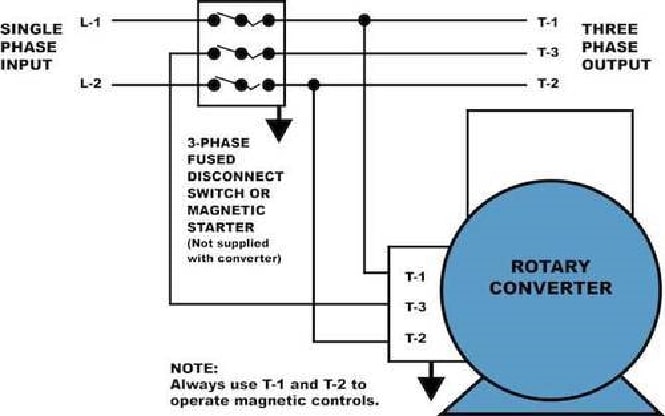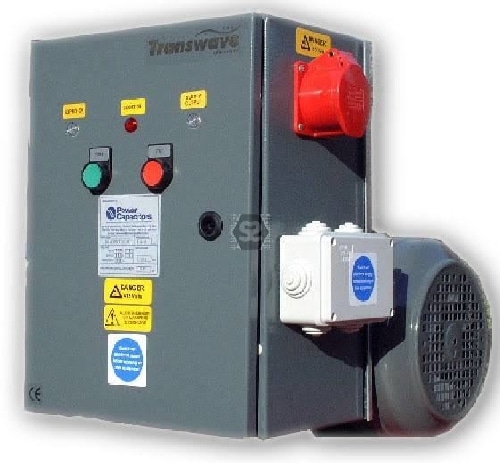Electric motors can be classified according to their number of supply phases. They can be categorized as single-phase, two-phase and three-phase.
Let’s read more information about these thanks to Udo’s new article that he kindly sent us few days ago.
Two-phase motors are no longer in use. A single-phase motor has two types of wiring; live and neutral. These motors run on single-phase power supply and have a single alternating voltage. As they only generate an alternate and not a rotating magnetic field, they require a capacitor to startup. Single-phase motors are typically used for small power applications.
Three-phase motors, on the other hand, require a three-phase power supply in order to work. These motors are driven by three separate alternating currents of equal frequency which peak at alternating points in time. A three-phase motor has three live wires and sometimes a neutral.

Fig 1: Parts of a three-phase motor | image: electricalengineeringtoolbox
Three-phase motors typically have over 150% more power than their single-phase counterparts. They are self-starting as they generate a rotating magnetic field. These motors do not generate vibrations and are less noisy than single-phase motors. Unfortunately, most structures are wired on single-phase power.
Although more than one phase often supplies a building, only one phase can be used at a time. This creates problems when an application requires a three-phase motor or when only a three-phase motor is available. Fortunately, there are ways in which a three-phase motor can be “tweaked” to run on a single-phase supply.
Variable frequency drive
The easiest way is by using a variable frequency drive (VFD). A VFD is an electrical device that controls motors that run in adjustable speeds. It consists of a rectifier, DC link capacitor and an inverter. A VFD carries out three-phase motor to single-phase power conversion by rectifying each pair of phases to DC, then inverting the DC to the three-phase output power. This not only eliminates the rush current during motor-starting but also makes the motor run from null speed to maximum speed smoothly.

Fig 2: Variable frequency drive | image: indiamart
VFDs are available in different rated capacities for different motors. All you need to do is connect the power supply to the VFD’s input and connect the three-phase motor to its output.
Rotary phase converter
Another method of running a three-phase motor on single-phase power is using a rotary phase converter (RPC). A rotary phase converter is an electrical machine that turns power from one multiphase system to another.

Fig 4: Rotary phase converter conversion circuit connection | image: plantengineering
These converters generate clean three-phase signals from a single-phase supply through rotary motion. RPCs are far more expensive than VFDs and so it’s rarely practical to use them for motor phase conversion.

Fig 5: Rotary phase converter | image: scosarg.com
Rewinding the motor
The final way in which a three-phase motor can be made to run on single-phase power is by rewinding the motor. This method is also known as single phasing. It involves rewinding the electric motor using capacitors. Three-phase power enters through three sine waves that are symmetrical. These waves are out of phase with each other by 120 Electrical degrees.
To convert a three-phase motor, two of its phases are connected to the supply single-phase power. A Phantom leg is created for the third phase using capacitors. The capacitors force an offset of 90 electrical degrees between the auxiliary and main windings. In order for the current to be balanced, the capacitors used must be of the right capacity for the load. The figure below shows the circuit diagram for conversion from three-phase to two-phase using single phasing method.
Have you ever runned a three-phase motor? How did it go and do you have tips for us?